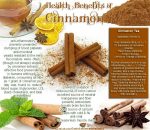
https://pbs.twimg.com/media/CJ7bHJUUsAA_6Mb.jpg:large
#weightloss #food #weightlosstips #dailyfithit http://t.co/1w3xO3EDr4 #WeightLoss
Your bodyweight depends on your total caloric intake more than on your macronutrient ratios (how many of your calories come from carbohydrates, proteins, fats, and Alcohol). Increased caloric intake as an independent variable is more than sufficient to explain the current obesity epidemic, without the need to find a scapegoat, such as high-fructose corn syrup.
A trial in a controlled setting (a metabolic ward) compared several isocaloric diets composed of 15% protein, 15-85% carbohydrate, and 0-70% fat. It concluded that caloric restriction, not macronutrient ratios, determined weight loss. Comparing low- and high-carbohydrate diets over 6 weeks and 12 weeks led to the same conclusion, as did comparing a low-fat/high-protein diet with a high-fat/standard-protein diet.
Another trial in a metabolic ward noted that, in healthy individuals overeating for 8 weeks, caloric intake alone accounted for the increase in body fat. However, caloric expenditure, total weight, and lean mass increased with protein as a percentage of caloric intake. In contrast, a previous study on the impact of protein on weight loss had noted that women lost as much weight on a high-protein diet as on a high-carb diet, but that subjects with high triglycerides lost more fat on the high-protein diet.
In people suffering from hyperinsulinemia, insulin resistance, or type-2 diabetes, the results are mostly the same: Caloric restriction, not macronutrient ratios, leads to weight loss. Two studies noted, however, that lean mass was better preserved in women (but not men) on a high-protein diet, and one study did find a greater weight loss (nearly entirely from fat) in the high-protein group (men and women).
In conclusion, losing weight requires a negative energy balance, which can be obtained by eating less, as we have seen, but also by exercising more.




